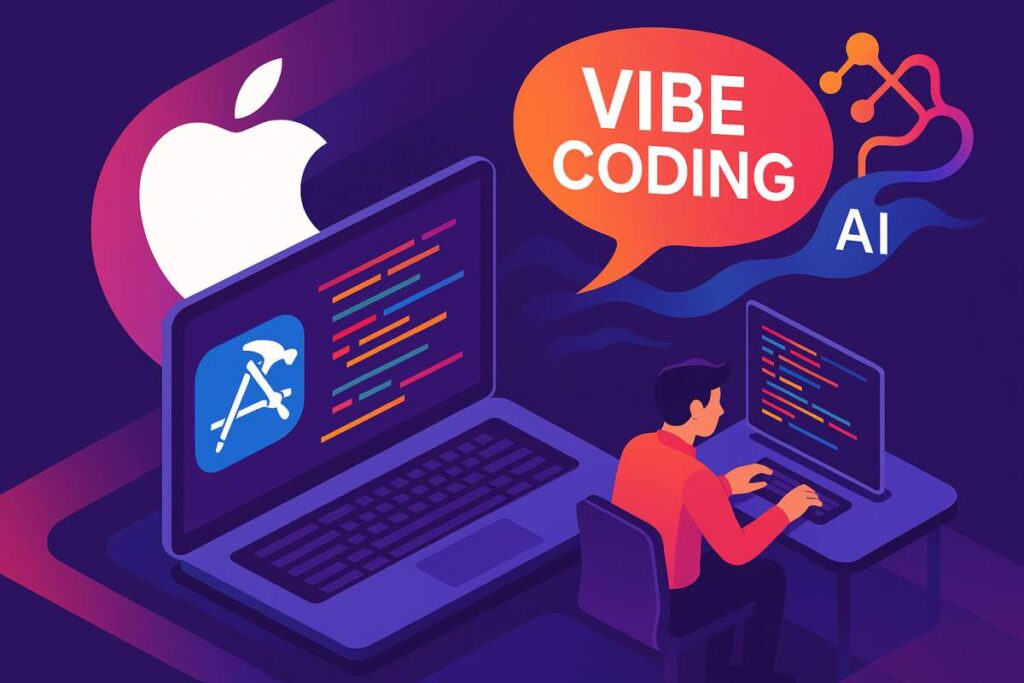Introduction
Imagine launching Xcode and having an AI co-pilot that not only finishes your boilerplate but also spots bugs, suggests optimizations, and even writes unit tests on demand. That’s the promise of Apple Anthropic Xcode, a groundbreaking partnership between Apple and AI startup Anthropic to embed the Claude Sonnet large-language model directly into your favorite IDE. As generative AI reshapes software development workflows, this collaboration marks a pivotal moment—one that could redefine how developers build apps across Apple platforms.

The Partnership Unveiled
In April 2025, Apple quietly began rolling out an internal beta of its next-generation Xcode, featuring a built-in “AI Coding Assistant” powered by Anthropic’s Claude Sonnet. According to a report by Bloomberg, this integration will:
- Run inference on Apple’s private cloud, ensuring code and data never leave Apple’s secure servers.
- Provide context-aware suggestions, from routine syntax to complex algorithm refactoring.
- Offer in-IDE testing through sandboxed execution, catching errors before they reach your local build machine.
By leveraging Claude’s hybrid reasoning modes—balancing speed and depth—developers get an experience that’s both fast and intelligent. Rather than relying on third-party extensions, Apple is embedding the model at the core of Xcode, promising seamless updates and tight integration with other Apple Intelligence features in macOS and iOS 18.
Why “Vibe Coding” Matters
“Vibe coding” is a term that’s caught fire in AI circles—it describes a workflow where the AI senses project context and flows alongside the developer, much like a human pair programmer. Here’s what sets vibe coding apart:
- Continuous Context Tracking
Claude Sonnet maintains memory of your project’s structure: file hierarchies, frameworks in use, even naming conventions. - Multi-Step Reasoning
Ask it to “optimize this sorting function for large datasets,” and you’ll get a step-by-step refactor rather than a one-line suggestion. - Self-Testing & Validation
The assistant runs code snippets in a sandbox to verify functionality, reducing the test-fix cycle by up to 30% in early Apple trials. - Conversational Interface
Natural-language prompts like “Generate a SwiftUI view with dark-mode support” yield production-ready code, complete with comments and error handling.
This approach contrasts with earlier copilots, which often treat each prompt as a stateless request—leading to repetitive clarifications and context loss.
Comparing AI Copilots in 2025
| Feature | Claude Sonnet (Anthropic) | GitHub Copilot (OpenAI) | Amazon CodeWhisperer |
|---|---|---|---|
| Context Window | 200K tokens | 100K tokens | 80K tokens |
| Multi-Step Reasoning | Yes | Limited | Limited |
| Self-Testing | Sandbox execution | No | Partial (via AWS Toolkit) |
| On-Premises Option | Apple private cloud | GitHub Enterprise Server | AWS PrivateLink |
| Natural-Language Prompts | Full conversational UI | Basic prompt interface | Basic prompt interface |
| Privacy Compliance | Apple-managed, GDPR, HIPAA | GitHub data policies | AWS data residency options |
Table: Feature comparison of leading AI copilots as of May 2025.
Key Features in Xcode
1. Code Completions & Refactoring
- Boilerplate Generation: Create API clients, model classes, and UI scaffolds in seconds.
- Automated Refactors: Rename classes, extract methods, and simplify long functions with a single prompt.
2. In-IDE Testing
- Sandboxed Execution: Validate code snippets without leaving Xcode’s environment.
- Automated Unit Tests: Generate XCTest cases for new or existing functions.
3. Performance Insights
- Memory Profiling Suggestions: Identify hotspots and propose alternative data structures.
- Asynchronous Optimization: Convert synchronous loops into
DispatchGrouporCombinechains.
4. Natural-Language Chat
- Interactive Chat Window: Ask follow-up questions—e.g., “Why did my protocol conformance fail?”—and receive detailed explanations.
- Code Explanation Mode: Paste legacy code and request summaries to get up to speed on unfamiliar modules.
“Integrating Claude into Xcode feels like having a senior engineer on call,” says Priya Singh, an iOS lead at a fintech startup. “I’ve shaved off hours in debugging and onboarding new team members.”
Developer Experiences: Early Feedback
Several Apple internal teams have been testing the Claude integration since late April 2025:
- Frontier Games (ARKit developers): Reported a 40% reduction in boilerplate setup time for new AR scenes.
- HealthTech Solutions: Leveraged in-IDE testing to catch subtle threading issues in watchOS apps.
- EduApp Labs: Used the natural-language interface to allow non-engineering staff to prototype SwiftUI layouts.
Developers appreciate how Claude respects project conventions—using the same naming styles and file structures—eliminating the need to manually reformat AI-generated code.
Strategic Implications
For Apple
- Accelerated Releases: Embedding AI tools directly in Xcode can shorten feature cycles for iOS 18 and macOS Sonoma.
- Data Privacy: By running all inference on Apple’s private cloud, the company ensures compliance with its stringent privacy standards.
- Competitive Positioning: Strengthens Apple’s developer ecosystem against Microsoft’s Copilot and Google’s AI IDE experiments.
For Anthropic
- Enterprise Validation: Securing Apple as an anchor client boosts Claude’s credibility in regulated industries.
- Data-Driven Refinement: Aggregated, anonymized usage metrics help refine model performance and steerability.
- Expansion Opportunities: Opens doors for Claude integrations in Pages, Numbers, and internal Apple automation tools.
What This Means for the Broader AI Landscape
The Apple Anthropic Xcode collaboration signals a maturation of generative AI in software engineering:
- From Plugins to Core: Whereas earlier solutions relied on plugins or extensions, this marks one of the first deep, first-party embeddings of an AI model into a major IDE.
- Demand for Explainability: Claude’s conversational mode addresses calls for transparent AI reasoning—developers can ask “why” at every step.
- Hybrid Cloud Models: Balancing on-device performance with private cloud inference sets a blueprint for future AI services in consumer software.
As more organizations demand AI tools that respect privacy and integrate seamlessly with existing workflows, partnerships like this could become the industry norm.
Conclusion & Call-to-Action
The integration of Anthropic’s Claude Sonnet into Xcode is more than a neat gadget—it has the potential to reshape developer workflows, improve code quality, and accelerate innovation across Apple’s platform ecosystem. Whether you’re an indie developer prototyping SwiftUI views or part of a large team building the next iPhone game, Apple Anthropic Xcode promises to be your most valuable co-pilot yet.
What do you think? Share your experiences with AI coding assistants in the comments below, and don’t forget to subscribe to our AI newsletter for real-time updates on the latest tools and integrations. If you loved this deep dive, check out our article on OpenAI’s Windsurf acquisition and our pillar post on AI Tools Enhancing Productivity Today for more insider insights.

